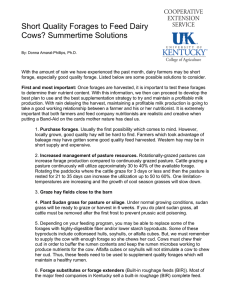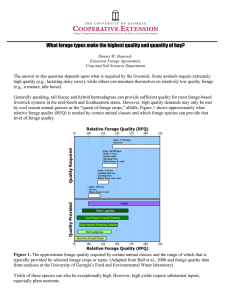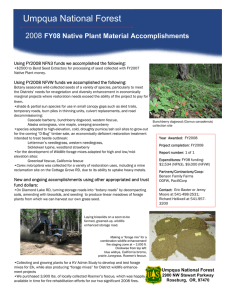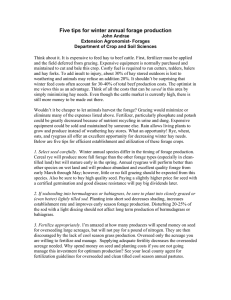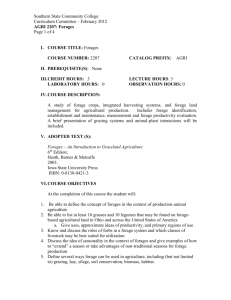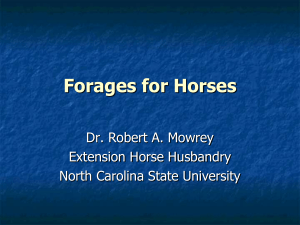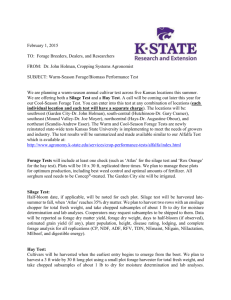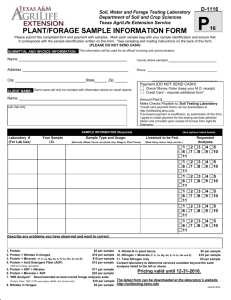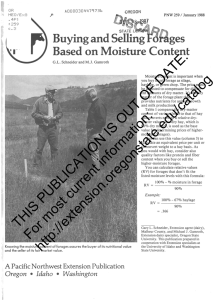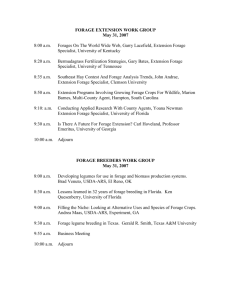Where Gan I Get The Answer To My Question?
advertisement
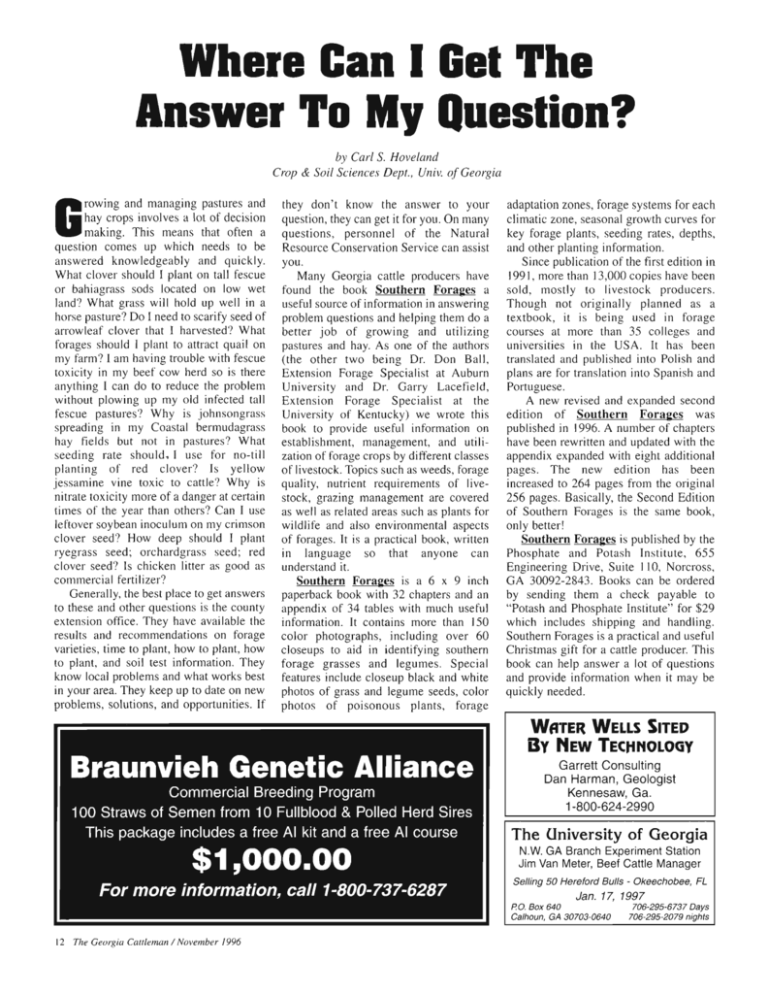
WhereGanI GetThe AnswerTo My Question? by Carl S. Hoveland Crop & Soil SciencesDept., Univ. of Georgia rowing and managing pasturesand hay crops involves a lot of decision makins. This means that often a question comes up which needs to be answered knowledgeably and quickly. What clover should I plant on tall fescue or bahiagrasssods located on low wet land? What grass will hold up well in a horsepasture?Do I needto scarify seedof arrowleaf clover that I harvested?What forages should I plant to attract quail on my farm? I am having trouble with fescue toxicity in my beef cow herd so is there anything I can do to reduce the problem without plowing up my old infected tall fescue pastures? Why is johnsongrass spreading in my Coastal bermudagrass hay fields but not in pastures? What seeding rate should, I use for no-till planting of red clover? Is yellow jessamine vine toxic to cattle? Why is nitratetoxicity more of a dangerat certain times of the year than others?Can I use leftoversoybeaninoculumon my crimson clover seed? How deep should I plant ryegrass seed; orchardgrass seed; red clover seed?Is chicken litter as sood as commercial f ertilizer? Generally,the bestplaceto get answers to theseand other questionsis the county extensionoffice. They have availablethe results and recommendationson forage varieties,time to plant, how to plant, how to plant, and soil test information. They know local problems and what works best in your area.They keep up to date on new problems,solutions,and opportunities.If they don't know the answer to your question,they can get it for you. On many questions, personnel of the Natural ResourceConservationServicecan assist you. Many Georgia cattle producers have found the book Southern Forages a usefulsourceof informationin answering problem questionsand helping them do a better job of growing and utilizing pasturesand hay. As one of the authors (the other two being Dr. Don Ball, Extension Forage Specialist at Auburn University and Dr. Garry Lacefield, Extension Forage Specialist at the University of Kentucky) we wrote this book to provide useful information on establishment,management,and utilizationof foragecropsby differentclasses of livestock.Topicssuchas weeds,forage quality, nutrient requirements of livestock, grazing managementare covered as well as relatedareassuch as plantsfor wildlife and also environmentalaspects of forages.It is a practicalbook, written in language so that anyone can understandit. Southern Forages is a 6 x 9 inch paperbackbook with 32 chapters and an appendix of 34 tables with much useful information. It contains more than 150 color photographs, including over 60 closeups to aid in identifying southern forage grasses and legumes. Special featuresinclude closeupblack and white photos of grass and legume seeds,color photos of poisonous plants, forage adaptationzones,forage systemsfor each climatic zone,seasonalgrowth curvesfor key forage plants, seeding rates, depths, and otherplantinginformation. Sincepublicationof the first edition in 1991,more than 13,000copieshavebeen sold, mostly to livestock producers. Though not originally planned as a textbook, it is being used in forage courses at more than 35 colleges and universities in the USA. It has been translatedand published into Polish and plans are for translationinto Spanishand Portuguese. A new revised and expandedsecond edition of Southern Forages was publishedin 1996.A number of chapters havebeenrewritten and updatedwith the appendixexpandedwith eight additional pages. The new edition has been increasedto 264 pages from the original 256 pages.Basically,the SecondEdition of Southern Forages is the same book, only better! Southern Forages is publishedby the Phosphate and Potash Institute, 655 EngineeringDrive, Suite 110, Norcross, GA 30092-2843. Books can be ordered by sending them a check payable to "Potashand PhosphateInstitute" for $29 which includes shipping and handling. Southem Foragesis a practical and useful Christmas gift for a cattle producer. This book can help answer a lot of questions and provide information when it may be quickly needed. WgreRWeu,sSmeo Bv NewTecHnoloay GarrettConsulting DanHarman,Geologist Kennesaw, Ga. 1-800-624-2990 The 0niversity of Georgia N.W.GA BranchExperiment Station JimVanMeter,BeefCattleManager Selling 50 Hereford Bulls - Okeechobee, FL Jan.17, 1997 PO.Box 640 706-295-6737 Days Calhoun,GA 30703-0640 706-295-2079nights 12 The Georpia Cattleman / November 1996

